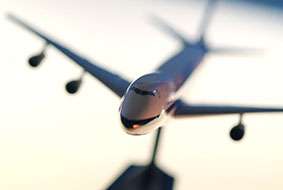Novel method for automatic detection of weld defects in aero engines

In a research project carried out by partners in Sweden and Spain, a novel method for automatic inspection of weld in hard to reach areas has been developed. The method is developed to be use it in the aero engine industry where the welds are located in hard to reach areas and the safety regulations are high. The method is called thermography.
When the project started for about two and a half year ago, the aim was to find a method making it possible to inspect weld in hard to reach areas. We have had success and now we can present an automatic inspection cell in our workshop, says Anna Runnemalm, project coordinator and assistant professor in Experimental Mechanics at University West in Sweden.
In a joint research project called 18-WeLdt, University West and GKN Aerospace in Sweden together with Tecnitest Ingenieros and IK4 Lortek in Spain, have worked with the goal to make it possible to inspect weld in hard to reach areas. The background is the requirement on decreased fuel consumption in aero engines, where reduced weight is a possible solution. A risk with lighter structures is reduced margin of safety. One step to solve that problem is increased quality control in production and regular maintenance inspection. With an increased need of inspection there is a demand on automation solutions. The design of the aero engines of today and tomorrow is also a challenge when it comes to inspection due to the location of the welds, in hard to reach areas. This requires new methods for inspection.
Surface breaking cracks in focus
All partners in the project have together evaluated end developed the method and algorithms for automatic inspection of welds. In this project surface breaking cracks has been the focus. Traditional non-destructive testing methods (NDT methods) for detecting surface breaking cracks is penetrant and eddy-current inspection, and in some cases ultrasonic testing. Those methods all have limitation when it comes to hard to reach areas.
The NDT methods that have been used in the 18-WeLdt project is thermography. The principle for the method is to introduce a controlled heating of the surface (excitation) and register the heating and cooling sequence by an infrared thermal camera. Thermography is a non-contact and full field method, which makes it suitable for automation. The method is today mainly used for inspection of composites in the NDT area. Inspection of metal structures puts specific requirements on both the thermal camera to be used, the excitation method as well as the analysis algorithms.
In the 18-WeLdt project different excitation methods have been studied and evaluated. The methods that have been compared are flash lamp, induction heating, continuous laser and vibration. One of the larger challenges in the project has been to make it possible to inspect welds with limited access. Different solutions have been studied, as miniaturization of thermal cameras and solutions with borescopes.
The result of the project is a demonstrator based on a thermography system with an infrared thermal camera and excitation by a continuous laser line in combination with a borescope for both the excitation and the viewing. The entire system is mounted on a robot arm, making it possible to automatic scan hard to reach areas. The project was presented and demonstrated in mid-June at Production Technology Center in Trollhättan, Sweden. A video sequence from the demonstration is found at www.ptw.hv.se/en/projects/films-about-the-research .The project was financially supported by Air Transport Net (www.airtn.eu) and ended in July 2015.
Provided by University West





















